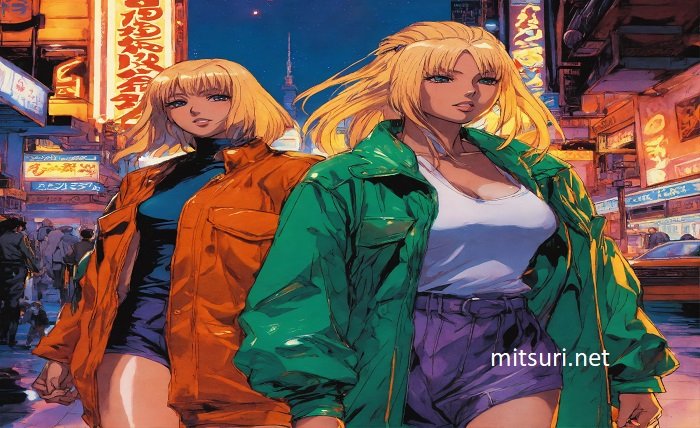Introduction
Certain genres and subjects in the manga and anime worlds question social norms and push boundaries. One such subgenre is futanari manga, which is renowned for its distinctive way of presenting issues and characters that juggle aspects of identity, sexuality, and fantasy. This blog post delves into the history, popular themes, artistic styles, and cultural significance of futanari manga, offering an exploration of this intriguing field.
What is Futanari Manga
The term “futanari manga” describes a subgenre of Japanese manga and anime where characters are frequently shown having both male and female genitalia and other physical characteristics. Originating in Japanese mythology, the name “futanari” has come to denote a genre that delves into topics of eroticism, sexuality, and gender identity. It differs from hentai in that it doesn’t just concentrate on explicit sexual content; instead, it concentrates on characters who represent both genders.
Historical Roots and Evolution
Futanari’s origins can be found in early Japanese literature and art, which occasionally featured representations of fluid sexual traits and ambiguous gender identities. But futanari did not start to emerge as a separate genre until the current period of manga. The growth of the genre into its current complex and diversified form was made possible by the more transparent exploration of these subjects by notable writers and artists in the middle of the 20th century.
Artistic Style and Visual Representation
Futanari figures are recognizable due to their exaggerated physical characteristics that combine elements of both masculine and feminine features. These figures are portrayed by artists using a variety of approaches, highlighting their dual nature through imaginative design and artwork. Futanari manga’s visual portrayal can range from highly stylized to realistic, depending on the artist’s interpretation and the story’s overall theme.
Themes and Narratives
Fundamentally, themes of transition, sexuality, and identity are explored in futanari manga. Characters in stories frequently struggle with their dual nature or investigate romantic interests and relationships that they have discovered. Romanticism and fantasy regularly collide, providing readers with a combination of escape and reflection. Stories about coming of age, paranormal encounters, and love affairs are typical; all are set inside the particular framework of futanari identity.
Cultural Reception and Controversies
Because of its graphic nature and topics, futanari manga has a devoted fan base in Japan and has garnered recognition worldwide, but mostly in specialized circles. Its depiction of gender fluidity and sexuality has spurred discussions and arguments about media depictions and societal norms. Critics note the ongoing discussion surrounding erotic genres in manga and anime and argue both for and against its artistic worth and cultural significance.
Impact on Popular Culture
Beyond its niche position, futanari manga has an impact on mainstream manga and anime through creatively challenging conventional narratives and pushing artistic boundaries. Fan art, adaptations, and derivative works on a variety of media platforms have been influenced by the themes and characters of the work. The genre’s ongoing influence in modern pop culture can be attributed to its capacity to elicit contemplation and the investigation of difficult subjects.
Notable Futanari Manga Series
A number of prominent futanari manga series have attracted notice for their inventive visuals and skillful storytelling. The genre has been influenced for a long time by books like “Futabu!” by Bosshi, which is well-known for its humorous yet graphic representations, and “TSF Monogatari” by Shindou, which examines themes of identity and metamorphosis. Readers seeking compelling stories that defy expectations and broaden artistic perspectives are drawn to these series.
Artistic Freedom and Creative Expression
Futanari manga provides artists with a platform to explore themes of gender, sexuality, and fantasy without conventional constraints. The genre’s emphasis on creative expression allows for diverse interpretations and stylistic approaches, fostering a rich tapestry of artistic works that cater to varied tastes and interests. Artists often cite futanari manga as a space where they can experiment with storytelling techniques and visual aesthetics, pushing the boundaries of manga as an art form.
Future Trends and Innovations
Futanari manga is expected to develop more in the future in tandem with societal changes and technological breakthroughs. Deeper examinations of intersectional identities, improved digital creativity, and novel narrative strategies that stretch the bounds of visual storytelling are a few examples of emerging trends. The impact of futanari manga on popular culture and media is anticipated to increase as audiences throughout the world become more networked, securing the genre’s position as a dynamic and developing subgenre of manga and anime. Futanari manga is expected to continue evolving and exploring in the future, mirroring the shifting perspectives of society on gender and sexuality as well as the manga business.
Conclusion
To sum up, futanari manga is a genre that questions conventions and delves into topics of fantasy, sexuality, and identity. From its historical beginnings to its current influence on popular culture, futanari manga has a global appeal and is still relevant to a wide range of viewers. Within the world of manga and anime, futanari manga is a key cultural phenomena as society advances and explores topics that were previously taboo.
FAQ
Is futanari manga suitable for all audiences?
No, sexual content and themes are frequently found in futanari manga, making it inappropriate for younger or more conservative viewers.
Are there legal concerns associated with futanari manga?
The distribution and consumption of adult content are subject to legal issues based on local laws and regulations, just like any other form of content.


